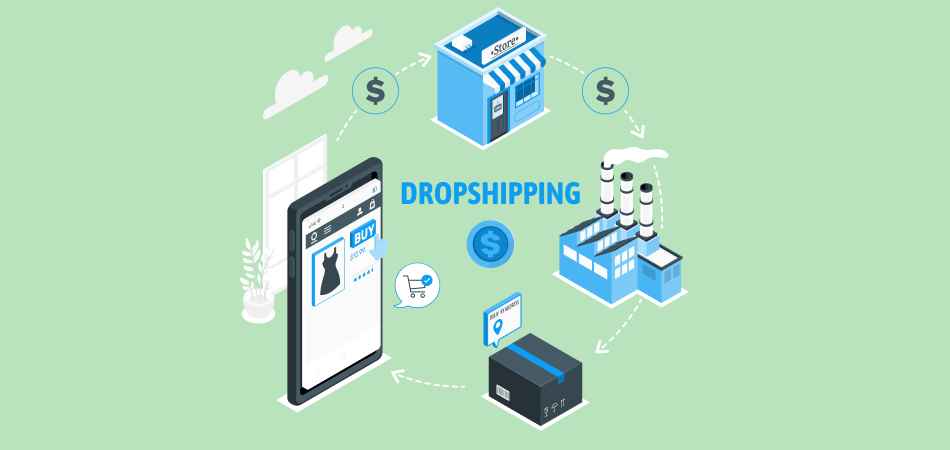How to Do a Competitor Analysis to Optimize Your Business

There will almost certainly be other companies offering products and services similar to yours, no matter what field you are in.
It's imperative to gain an advantage over your competitors when operating in a crowded marketplace. Let's see how:
It's not enough to simply know what they offer. Nowadays, business owners and marketers can learn more about their competitors than ever before because of new software and technology.
To provide the best product or service at the right price for your customers, you must analyze your competition at various stages of your business. Discover the benefits of conducting a competitive analysis routinely and what a competitor analysis consists of.
| Get Started Now to Grow Your Online Business with the Best AliExpress Dropshipping Tool - DSers! |
What Is a Competitive Analysis?
Competitive analysis is a research method where you investigate the products, sales, and marketing strategies of major competitors. Creating solid business strategies this way will help you surpass your competitors.

Understanding how your competitors work will allow you to identify ways in which you can outperform them.
You can also make sure your product meets or exceeds industry standards by staying abreast of industry trends.
In order for your analysis to be truly valuable, you should:
- Choose the right competitors to analyze
- Analyze the factors that matter in your competitors' business
- Find the data where you can
- Identify how your business could benefit from the insights.
The Importance of Competitor Analysis
It is imperative to do competitive analysis effectively to stay competitive, but many marketing teams aren't aware of how to approach it.
For business success, 3 out of 4 marketers say competitive analysis is very important or important. However, 6 out of 10 marketers admit that they aren't good at analyzing competitors. Only 4 out of 10 marketers analyze competitors as part of their business strategies.
Competitor analysis is crucial to understanding how your business is affected by them and how they can threaten your success.
You can use it to:
- Validate or develop your unique value proposition
- Focus on developing products that customers value most in your competitors' products
- Take advantage of the weaknesses your competitors' customers complain about and make your product better
- Assess your growth against benchmarks
- Discover untapped markets that your competitors aren't serving
- Find gaps between what your competitors' products offer and what your customers want to buy and create a new product category
How to Conduct a Competitor Analysis
1. Identify your goals
You must define your goals when performing competitor analysis. What are you hoping to achieve from it?
- Does your brand need to be better than your competition's?
- For your USP to be improved?
- Do you want to rank higher than your competitors for certain keywords?
- To increase your social sharing and followers?
- To give your users a better experience than your competition?
- To increase conversions?
You will be able to focus your competitor analysis if you define your goals and then determine what to do after you have completed it.
2. Identify the data you must collect
As part of competitor analysis, you will need to decide which type of data to collect to meet your goals.
Data collection and prioritization will be determined by the goals you set. When you're trying to improve your video marketing in comparison to your competitors, such data as video content, SEO rankings for videos, and social media shares for videos are of utmost importance. For your competitor analysis to be manageable, it is important to prioritize the types of content to gather.

3. Know who your competitors are
The list of competitors should also be narrowed down to make your competitive analysis easier to handle. When you run a business online, you may compete with hundreds or thousands of other companies, so researching each one equally isn't feasible.
One of the easiest ways to find out who your top competitors are is to perform a Google search on the type of product or service you sell and see which companies appear at the top.
You can also identify your top competitors quickly by using a search analytics tool. A product review site or a market research report can also help you identify your competitors.
4. Gather the data you need
After prioritizing which companies you identify as your competitors, you should collect the data that you have prioritized. Automation will improve this step's efficiency in more ways than one.
Data collection on the internet and social media can be automated, although not all can. There are platforms-specific tools available to automate data collection, such as Google Analytics, Facebook Insights, and Twitter Analytics.
You can integrate multiple sources of data using marketing software. All your data should eventually be stored in one database so you can analyze it.
5. Examine your data
Analyzing your data is the next step after collecting it. Your competitor analysis goals should be tied to some key performance indicators you plan to use when analyzing your data.

KPIs might include stats such as traffic volume, page authority, and unique backlinks, for instance, if your goal is to generate more search engine traffic than your competitors. Set KPIs before collecting data to ensure the best results.
6. Conduct periodic competitor analysis reviews
Analyzing your data will let you know if there are any areas for improvement so you can gain an edge over the competition. Your standard operating procedures should include a periodic review of competitor analysis to make this sustainable.
Creating a checklist with a schedule of when to perform periodic reviews is a good way to go about it.
Things You Should Include in a Competitor Analysis
· Feature matrix: Analyze every product and service that your direct competitors offer. You can visualize how companies stack up against each other using a competitor insight spreadsheet.
· Percentage of market share: You can use this information to find out who your main competitors are. Be open to learning from larger competitors about how to succeed in your industry, as they have much to teach.
· Pricing: Assess your competitors' price points and quality vs. quantity equations. Track your competitors' prices and their products' stock information to ensure that you can have reliable data to proceed your pricing decisions to profit more.
· Marketing: Each competitor employs a different competitive strategy during marketing. Check out your competitors' websites, social media profiles, event sponsorships, SEO strategies, taglines, and current marketing campaigns.
· Differentiators: Do your competitors advertise their strongest qualities? What makes them unique?
· Strengths: Determine what works for your competitors. Have they received positive reviews? Are they well known?
· Weaknesses: Find out how each competitor can improve. For example, is their social media strategy weak? Are there no online stores? Are they using an old website? Information such as this will help you compete.
· Reviews: Analyze the customer reviews of your competitors, noting both the positives and negatives. Look for reviews with 5-, 3-, and 1-star ratings in a 5-star system.
Bottom Line
A competitive analysis not only helps you learn about others but also identifies ways to make your brand stand out. As a business, you have a set of intangible assets that differentiate you. You need expertise in marketing, branding, and market knowledge! Compare yourself with other companies on those factors.
In addition, there’re many competitive analysis tools in the market that save you time and effort. When you’re running online stores, especially on Shopify e-commerce platforms, it’s easier to find such tools like Xpareto and Commerce Inspector, and other solutions such as DSers, Loox and Growave to grow and scale your online business.













 Company
Company
 Why Choose DSers
Why Choose DSers
 Blog
Blog
 Help Center
Help Center



